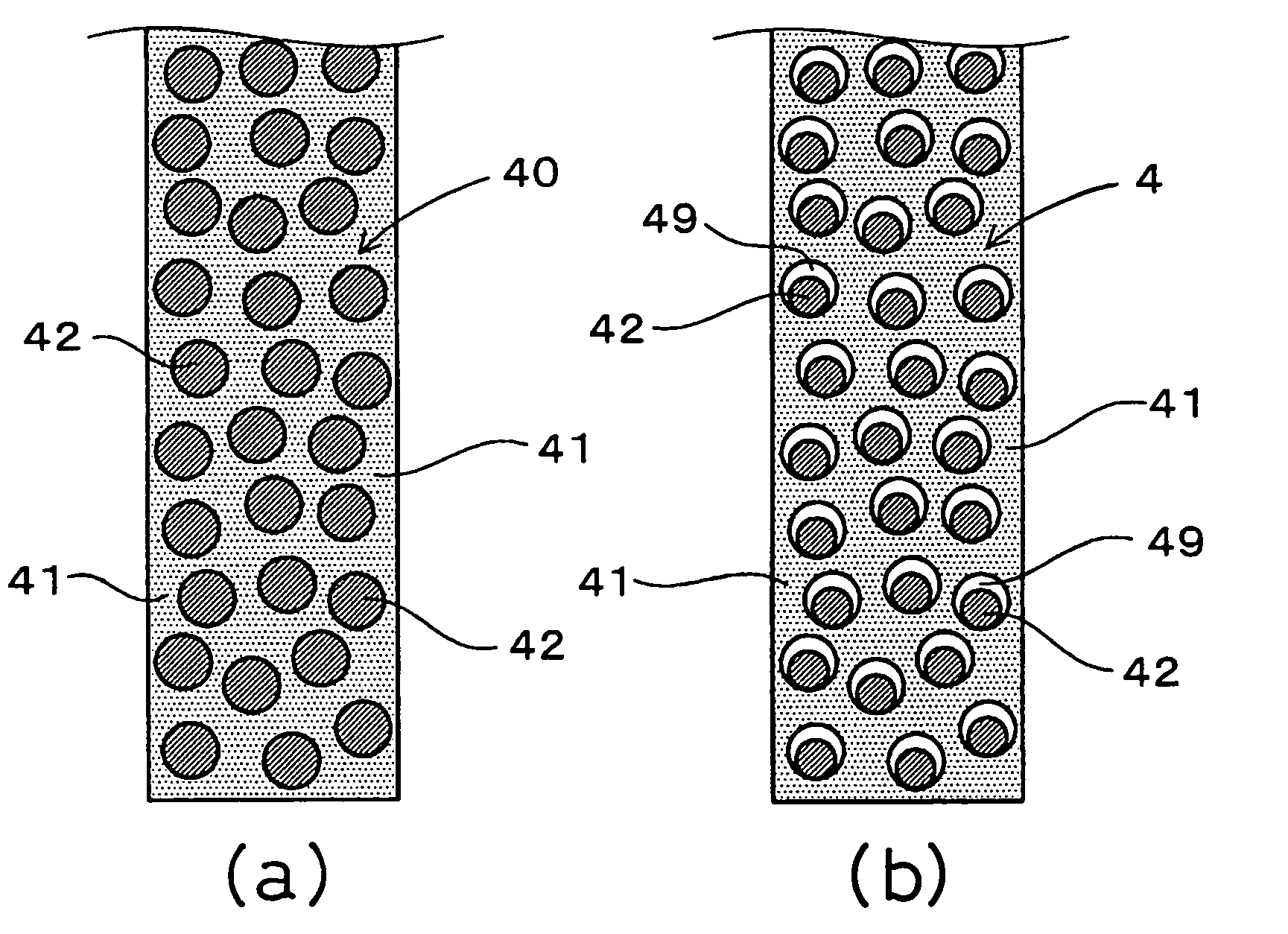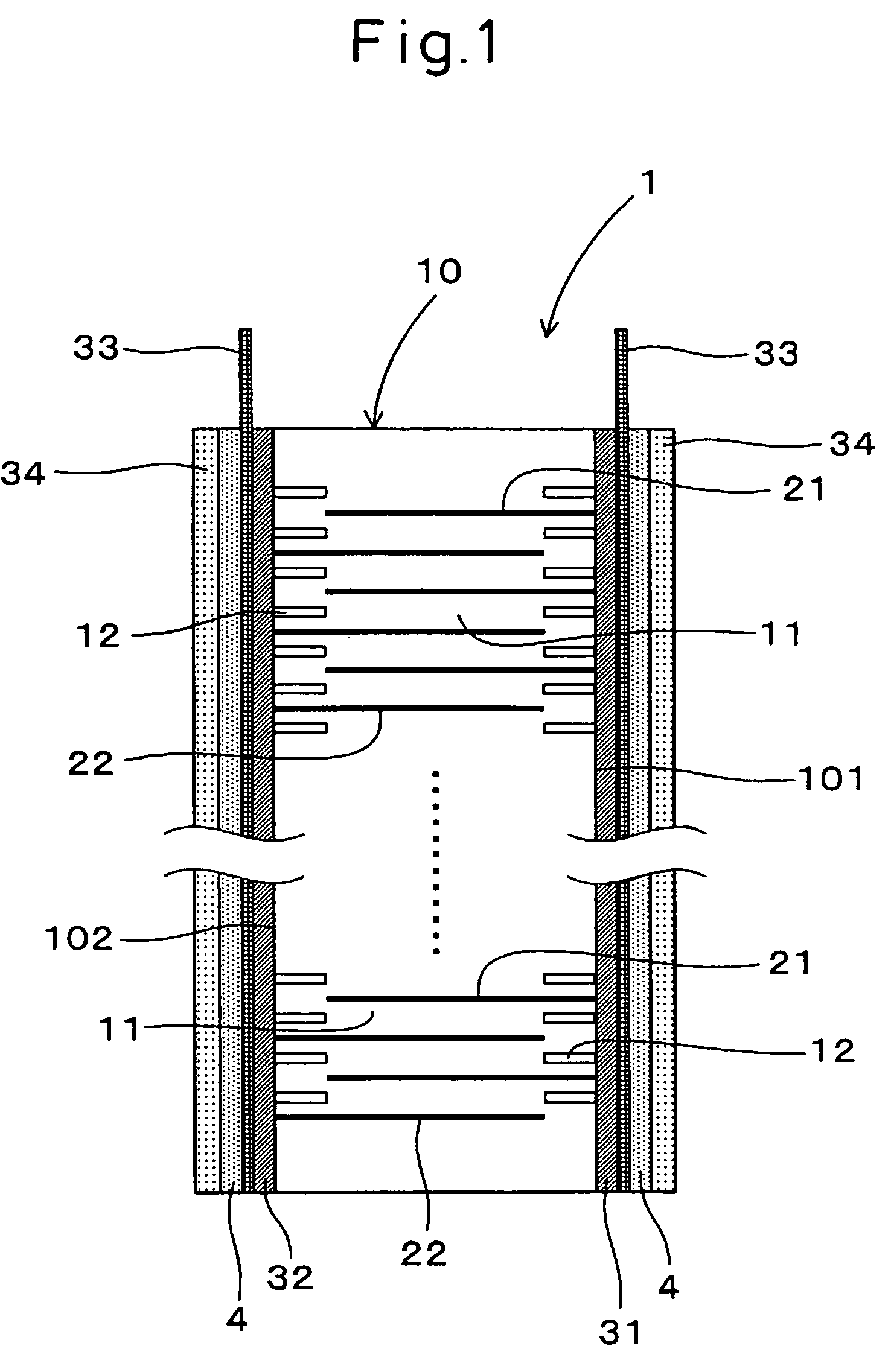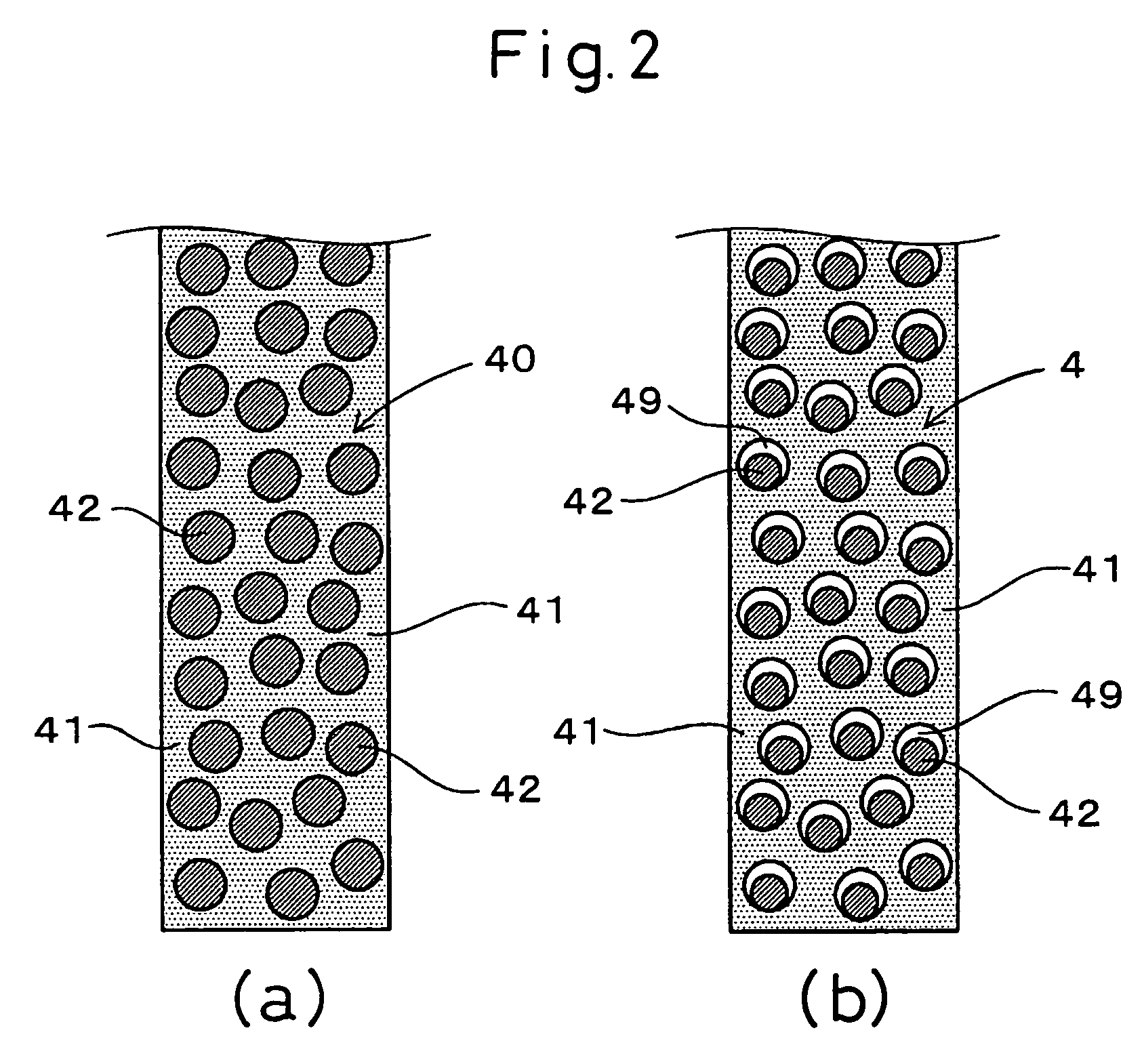Stacked piezoelectric element, production method thereof and electrically conducting adhesive
a piezoelectric element and production method technology, applied in the direction of generators/motors, mechanical equipment, machines/engines, etc., can solve the problems of low stress relief layer, easy cracks in the stress relief layer, and failure of electric conduction, so as to prevent separation or the like, improve elasticity, and easily undergo elastic deformation
- Summary
- Abstract
- Description
- Claims
- Application Information
AI Technical Summary
Benefits of technology
Problems solved by technology
Method used
Image
Examples
example 1
[0080]The stacked piezoelectric element according to Examples of the present invention is described by referring to FIGS. 1 to 3.
[0081]The stacked piezoelectric element 1 of the present invention comprises, as shown in FIG. 1, a ceramic stack 10 obtained by alternately stacking a piezoelectric layer 11 comprising a piezoelectric material and an internal electrode layer 21 (22) having electrical conductivity, and an electrically conducting adhesive layer 4 provided to allow for electrical conduction of the internal electrode layer 21 (22) of the same polarity on the side surface of the ceramic stack 10.
[0082]The electrically conducting adhesive layer 4 comprises, as shown in FIG. 2(b), a base resin 41 having dispersed therein an electrically conducting filler (not shown) and microparticles 42.
[0083]The boundary between the microparticle 42 and the base resin 41 is in a state that a void 49 is formed at least in a part between those two members.
[0084]This is described in detail below....
example 2
[0135]This Example is a case where, in the stacked piezoelectric element 1 of Example 1, the electrically conducting adhesive 40 contains, as the microparticle 42, a particle with at least the surface thereof having a non-adhesive surface 429 capable of not adhering to said base resin 41.
[0136]In this Example, silicone was used as the microparticle 42. Other than silicone, for example, Teflon (registered trademark) may be used.
[0137]Others were the same as in Example 1.
[0138]In this Example, an electrically conducting adhesive containing, as the microparticle 42, a particle with at least the surface thereof having a non-adhesive surface 429 capable of not adhering to said base resin 41 was used.
[0139]In the electrically conducting adhesive layer 4, after the curing step, as shown in FIG. 7(a), as the surface of the microparticle 42 has a non-adhesive surface 429 capable of not adhering to the base resin 41, the microparticle 42 does not adhere to the base resin 41 and these two memb...
example 3
[0142]This Example is a case where, in the stacked piezoelectric element 1 of Example 1, as shown in FIG. 8, the electrically conducting adhesive 40 uses, as the microparticle 42, a particle comprising a particle body 421 and an exterior non-adhesive coat layer 422 covering the particle body surface and forming the non-adhesive surface 429.
[0143]In this Example, a resin particle was used as the particle body 421 of the microparticle 42. Other than this, for example, a ceramic particle or a glass particle may be used.
[0144]Also, silicone was used as the exterior non-adhesive coat layer 422. Other than silicone, for example, Teflon (registered trademark) may be used.
[0145]Others were the same as in Example 1.
[0146]In this Example, a particle comprising a particle body 421 and an exterior non-adhesive coat layer 422 covering the particle body surface and forming the non-adhesive surface 429 was used as the microparticle 42.
[0147]Therefore, in the electrically conducting adhesive layer ...
PUM
| Property | Measurement | Unit |
|---|---|---|
| particle diameter | aaaaa | aaaaa |
| thickness | aaaaa | aaaaa |
| thickness | aaaaa | aaaaa |
Abstract
Description
Claims
Application Information
 Login to View More
Login to View More - R&D
- Intellectual Property
- Life Sciences
- Materials
- Tech Scout
- Unparalleled Data Quality
- Higher Quality Content
- 60% Fewer Hallucinations
Browse by: Latest US Patents, China's latest patents, Technical Efficacy Thesaurus, Application Domain, Technology Topic, Popular Technical Reports.
© 2025 PatSnap. All rights reserved.Legal|Privacy policy|Modern Slavery Act Transparency Statement|Sitemap|About US| Contact US: help@patsnap.com



